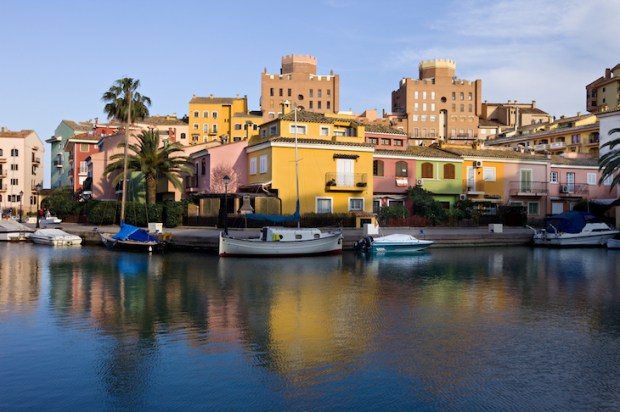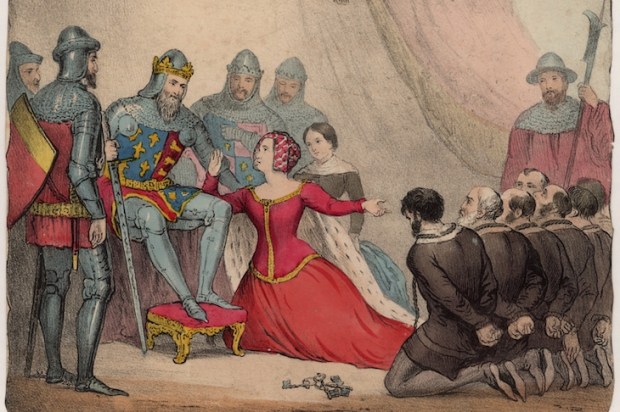Next week I’m going to Ladakh for a travel gig. Me neither — never heard of it. So I heaved out my Victorian world atlas and found it at the apex of India, northwest of Kashmir, and sharing a border with Tibet. Then I went online to find books about the place. Choice was limited. I bought A Journey in Ladakh by David Harvey (‘Extremely entertaining, a classy travel book and a palpitating fragment of a spiritual autobiography’ — David Mitchell, New Society); I bought Ancient Futures by Helena Norberg-Hodge (‘The book that has had the greatest influence on my life… about tradition and change in a remote corner of India that has never been subject to the brutality of the modern, global economy’ — Zac Goldsmith); and I bought The Road to Lamaland by ‘Ganpat’ (M.L.A. Gompertz), published in 1919, and therefore predating the age of the fatuous puff.
A Journey in Ladakh is a spiritual journey undertaken by a poet whose life, he says, was ‘full of confusion and distress of every kind’. To ameliorate that distress he cultivated an interest in Buddhism. He liked Buddhism’s ‘calm and radical analysis of desire, its rejection of all the self-dramatising intensities by which I lived, and its promise of a possible, strong, and unsentimental serenity’. Then he went to Ladakh, found a holy man, and wrote a sentimental book about it with page after page of intense, self-dramatising dialogue.
Ancient Futures — foreword by HH The Dalai Lama, introduction by Peter Matthiesen — turned out to be a sentimental Luddite romance disguised as anthropology. In short, it is an account of how the evil tentacles of western industrialisation penetrate the Himalayan vastness and tragically impinge on a hitherto idyllic agrarian society (Ladakh) which has no concept of tragedy and which recycles even its own faeces. I lost confidence in the author’s intelligence right from the off. Before she went to Ladakh, she says, she staunchly believed that the western way of life was nothing but a blessing and the acme of human progress. If true, she must be the only educated individual to have done so in half a century. Then she went to Ladakh, where, ‘as you wander through the fields, or follow the narrow paths that wind between the houses, smiling faces greet you’, and she began to have terrible doubts. I gave up on Ancient Futures when I was introduced to the first monk ‘with a balding head and a contagious smile’. Nobody, it seemed, had smiled at Helena Norberg-Hodge before. Certainly none had smiled with such devastating effect. Old Baldy lived, she says, in an ‘awe-inspiring’ monastery.
And then, thankfully, I turned to ‘Ganpat’, and The Road to Lamaland. Unlike Helena Norberg-Hodge, ‘Ganpat’ had fought in East Africa against General Lettow von Vorbuck. He was christened Ganpat by his sepoys because they couldn’t pronounce ‘Gompertz’, and because he was tall and thin and Ganpat is another word for Ganesh, the elephant God. His book is the account of a pony trek overland from Srinagar in Kashmir made while on annual leave from his post on the North-West Frontier. He takes with him a Sunni Muslim servant called Habib. Habib is comically contemptuous of everyone they meet — Tibetans, Ladakhis, Kashmiris, Mongols, Shia Muslims. Far above Habib in the travelling band’s pecking order, however, is an English fox terrier called Bill, and above Bill come two ‘hunt terrier’ pups called Vagrant and Vixen, whose unworldly behaviour on the trek through the Indus Valley accounts for a great deal of the author’s ruminative narrative.
I loved this cheerful old thick-paged book. Unlike the cringing relativism of the previous two authors, ‘Ganpat’ wears the cultural confidence of an English soldier-servant of the British empire without apology. He has no time at all, for example, for Tibetan Buddhism which, in his opinion, is a polite fiction concealing nothing more than naked devil worship. (So acclimatised am I to Tibetan mysticism’s status as one of western materialism’s most sacred totems, this thrilled me.) The sight of his first Lama drives him to an outburst of furious anticlericalism:
The Tibetans, a mountain people with the natural superstition common to all ignorant races who live under the high snows, with the terrors of gale and snowfall and avalanche ever before them, and the bleak solitude of the heights about them, inevitably come under the thumb of the Lamas, and so today the Lama is the most important person in Tibet, and the Tibetan’s life is literally one unceasing round of devil-dodging from birth to death.
Ladakh is known as ‘Little Tibet’. Ladakh culture is largely Tibetan culture. Now that the Chinese have put the squeeze on old Tibet, Ladakh is where one still goes to see it. On my itinerary are meetings with holy men. Are they simply devil worshippers? I shall ask them.
Got something to add? Join the discussion and comment below.
Get 10 issues for just $10
Subscribe to The Spectator Australia today for the next 10 magazine issues, plus full online access, for just $10.















Comments
Don't miss out
Join the conversation with other Spectator Australia readers. Subscribe to leave a comment.
SUBSCRIBEAlready a subscriber? Log in